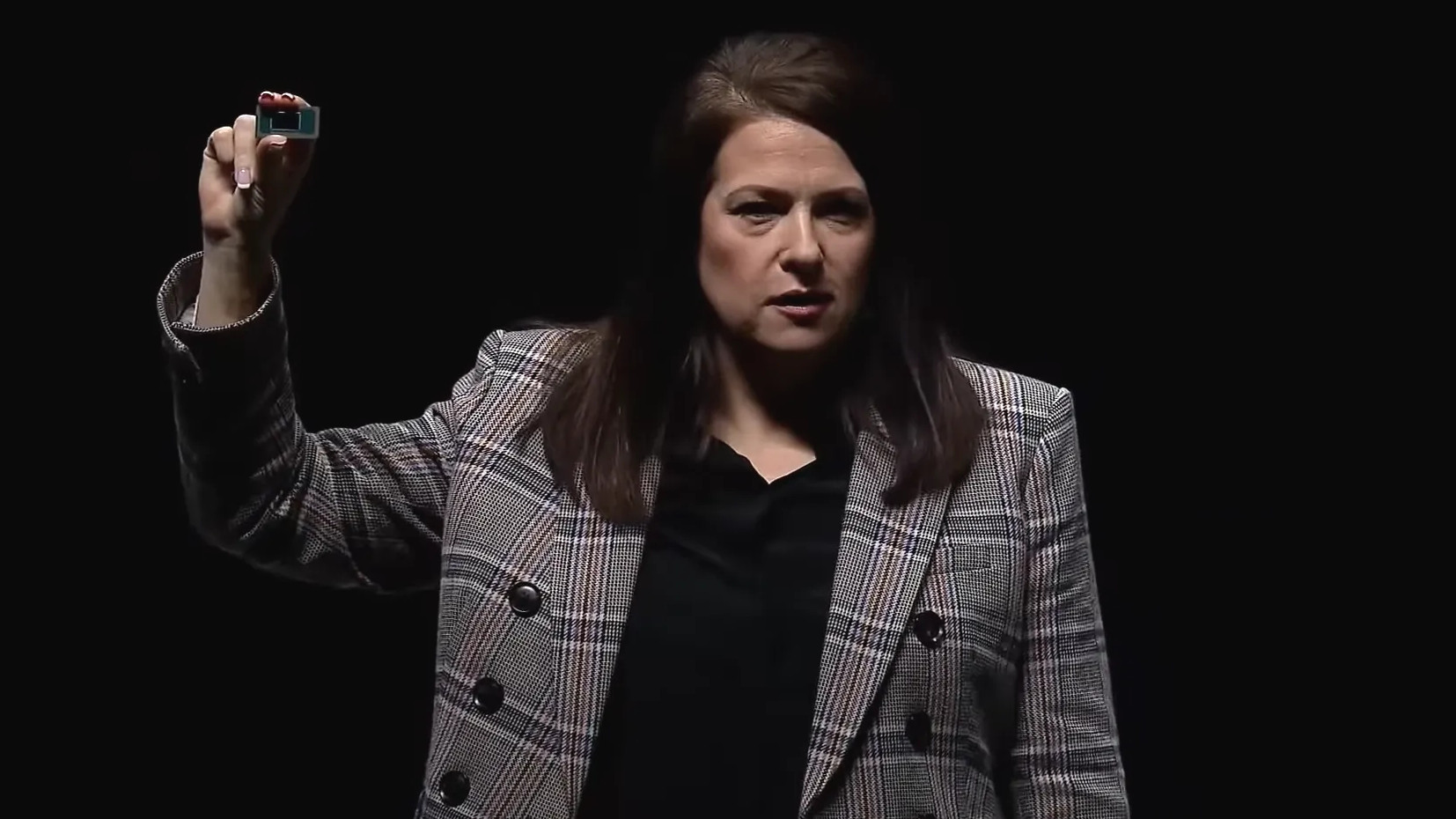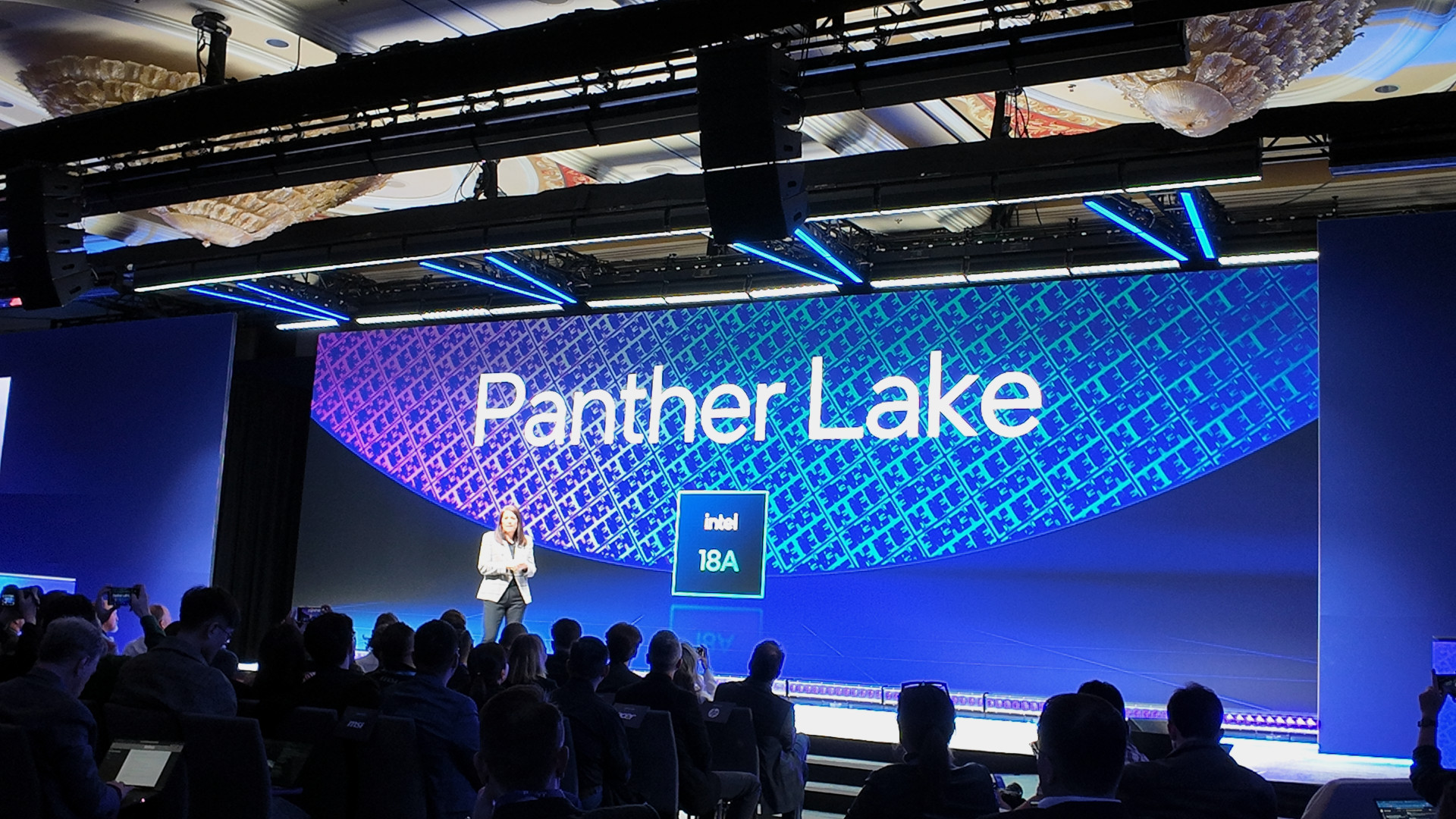
Almost 14 months ago, Intel launched its first multi-tile processor, codenamed Meteor Lake, for laptop PCs. Just nine months later, it was joined by the much-improved Lunar Lake chip, for the ultra-low power market and at this year's CES event, Intel briefly demonstrated its successor, Panther Lake. As this is the first processor to be made on Intel's 18A process node, the little chip garnered quite the attention.
2024 is almost certainly a year that Intel would prefer everyone to forget about and at this year's mega-tech CES event, it's been singing its own praises regarding how it plans to bring things around in the coming months. Top of the list, despite only appearing briefly at the conference, was Panther Lake—the architectural successor to the well-received Lunar Lake.
Interim Co-CEO Michelle Johnston Holthaus held a sample of the tiny chip aloft for the assembled crowd of journalists to see. That was about all we really got to observe about Panther Lake, though Holthaus did her best to promote it.
"Panther Lake, our lead product on Intel 18A, will launch in the second half of this year. It will take everything you love about Lunar Lake, all the advances in the architecture, to the next level. We have systems already running Panther Lake, and we're sampling it across all of our major customers already."
A variety of different laptops using Panther Lake chips were on display in another booth but given that the processor is still in development, nobody was permitted to play around with the machines nor observe them running any applications.
Not that Panther Lake will really matter for PC gaming because while some gaming laptops have sported Meteor Lake CPUs, almost none are using Lunar Lake. The exception, and it is a very loose exception, is MSI's Claw 8 handheld gaming PC. That's clearly not a laptop but Lunar Lake does pretty well in that format, so there's a good chance that Panther Lake might appear in the odd handheld or two.

The one thing we do know about Intel's next-gen processor is that it won't be using on-package DRAM like Lunar Lake does. This should help to make the chip more palatable to system vendors, who want to offer customers a broad range of products, especially in the budget sector. Compared to a typical laptop CPU, Lunar Lake is quite expensive and rather limited in scope, because it has two DRAM chips bonded to the package.
Investors will be looking very carefully at how good Panther Lake is because it's the first commercial chip to roll off Intel's 18A production line. Previous CEO Pat Gelsinger famously "bet the whole company on 18A" and if the little CPU turns out to be a miniature marvel then his gamble will be fully justified. If it isn't though, then it's difficult to see how Intel Foundry can continue operating.
It might just be for a fairly niche sector but an awful lot of Intel's fortunes are going to be riding on Panther Lake. For the consumer's sake (i.e. a competitive market), let's hope it's as good as Intel says it is.







